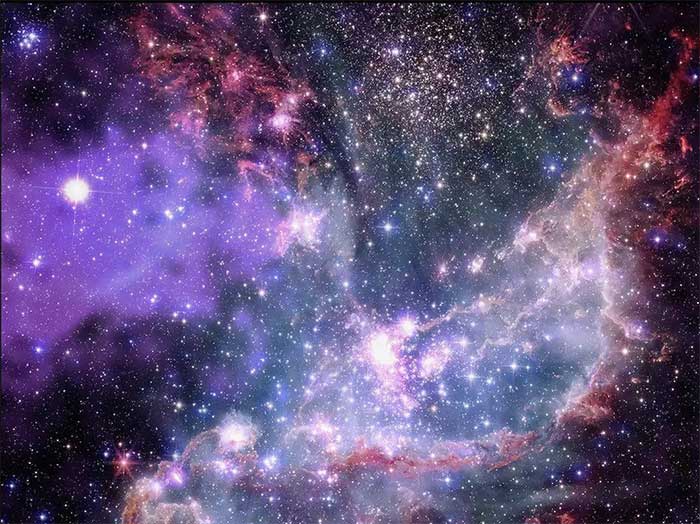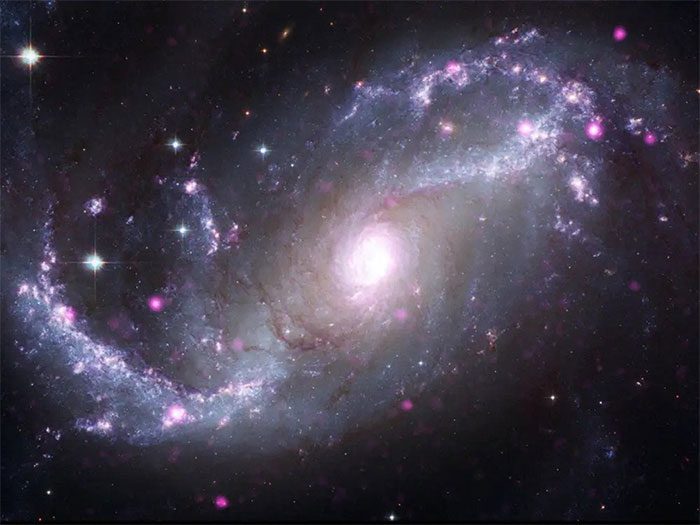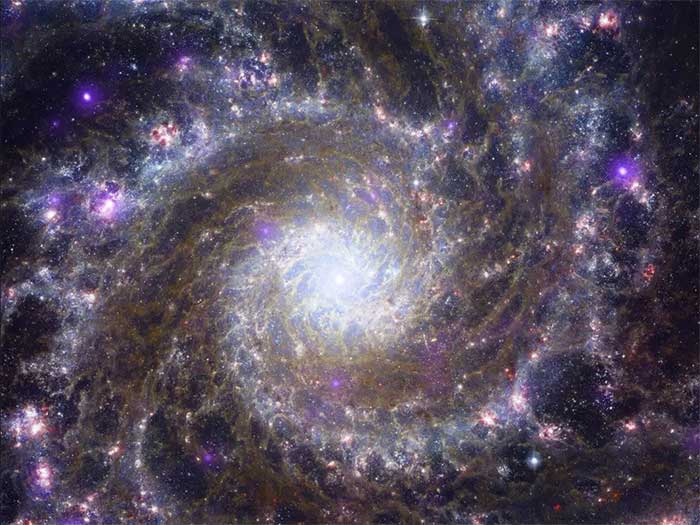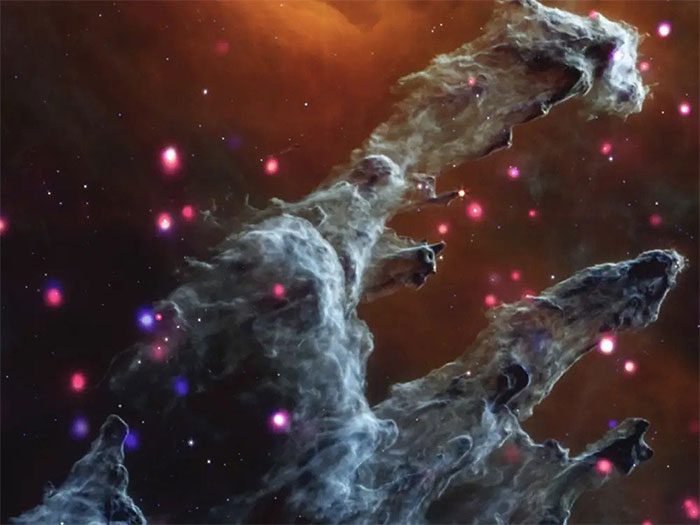NASA has released stunning new space images by combining the capabilities of the James Webb Space Telescope and the Chandra X-ray Observatory.

The four latest space images released by NASA last week – (Image: NASA).
The National Aeronautics and Space Administration (NASA) recently unveiled four new space images that provide a glimpse into two galaxies: a nebula and a star cluster.
The images were captured using X-ray and infrared data collected by the Chandra Observatory, the James Webb Space Telescope, and the Hubble Space Telescope.
“These four images depict phenomena that cannot be observed with the naked eye,” NASA stated in a release.
NGC 346: A Colorful Star Cluster

NGC 346 is a star cluster located 200,000 light-years from Earth – (Image: NASA).
NGC 346 is a star cluster in the Small Magellanic Cloud (SMC) galaxy, approximately 200,000 light-years away from Earth.
This star cluster resembles a large city and could be home to hundreds of thousands to millions of stars.
Thanks to the James Webb Telescope, we can see these gas and dust regions as a pink-purple fog interspersed with bright stars.
According to NASA, Chandra’s data also reveals the existence of young, hot, and massive stars emitting strong winds from their surfaces.
Additionally, the image captured by Chandra shows a purple cloud, believed to be the remnant of a supernova explosion caused by a massive star.
NGC 1672: A Spiral Galaxy

NGC 1672 is a spiral galaxy approximately 60 million light-years from Earth – (Image: NASA).
Astronomers classify NGC 1672 as a barred spiral galaxy based on its shape, located about 60 million light-years from Earth.
The image analyzed by Chandra shows black holes actively “consuming” surrounding stars, remnants of a supernova explosion, and neutron stars.
M74: Another Spiral Galaxy

Messier 74 (M74) is also a spiral galaxy, located 32 million light-years from Earth – (Image: NASA).
Messier 74 (M74) is located 32 million light-years from Earth and is also a spiral galaxy similar to our Milky Way.
However, M74 is often referred to as the “Phantom Galaxy” because it is relatively faint and difficult to observe with telescopes, being smaller than some other galaxies.
According to NASA, infrared images from the James Webb Space Telescope reveal gas and dust surrounding M74, while Chandra’s data captures the energetic activity of stars within the galaxy.
Meanwhile, optical data from the Hubble Space Telescope shows additional stars and dust within the dust lanes.
The Eagle Nebula (M16)

Messier 16 (M16) is approximately 6,500 light-years from Earth – (Image: NASA).
Messier 16 (M16), also known as the Eagle Nebula, is located about 6,500 light-years from Earth.
This image captures a famous celestial region often referred to as “the pillars of creation”, consisting of dense clouds of dust and gas where new stars are currently forming.


















































